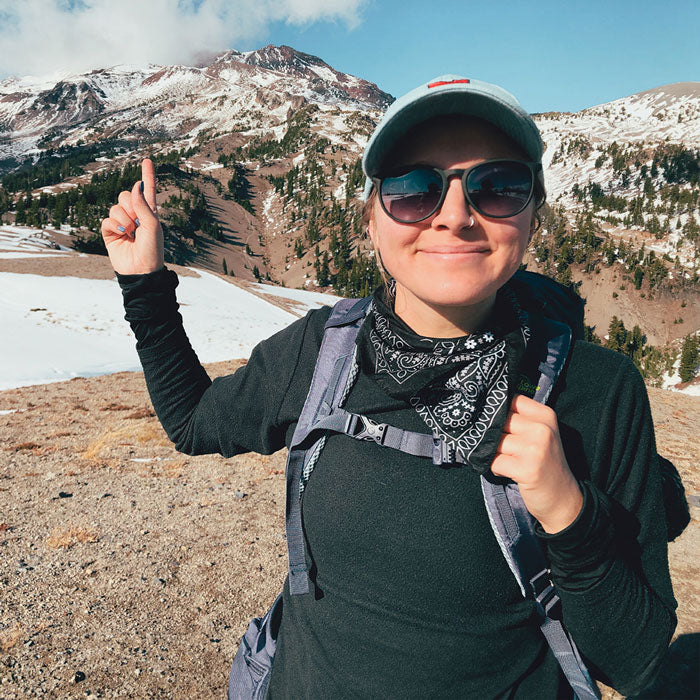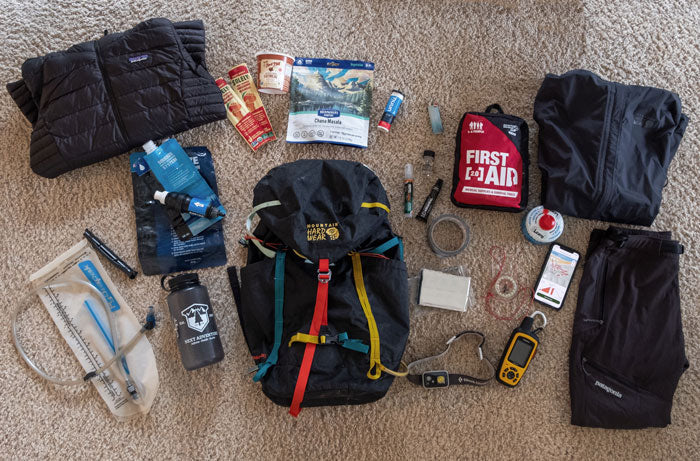
The 10 Essentials for Summer Hiking
Summer hiking season is upon us and there is no better time to get prepared for it than now. Make sure you are ready for anything that can happen on the trails by ensuring the 10 essentials are packed in your bag.
 1. Navigation:
This includes a map, compass, altimeter, GPS device, personal locator beacon or satellite messenger. This is important in helping you plan your route, or finding your way back in the event that you wander off the trail. Personally, I like to download offline maps using Alltrails+ as well as carry my Garmin Inreach. I always like to have 2 forms of navigation in case one fails.
1. Navigation:
This includes a map, compass, altimeter, GPS device, personal locator beacon or satellite messenger. This is important in helping you plan your route, or finding your way back in the event that you wander off the trail. Personally, I like to download offline maps using Alltrails+ as well as carry my Garmin Inreach. I always like to have 2 forms of navigation in case one fails.
SHOP NAVIGATION
2. Headlamp:
Or some form of illumination. I use a Headlamp, as it provides my hands to be free, but a flashlight will work just fine as well. Remember to pack extra batteries!
SHOP LIGHTING
3. Sun protection:
This includes sunglasses, hats, UV protective clothing, and sunscreen. I take extra precaution here since sunburn can lead to quicker dehydration as well as eye damage.
SHOP SUN PROTECTION
4. First aid:
This includes foot care as well. This is another area that you shouldn’t skimp on. I’ve seen plenty of other hikers and backpackers only carrying some Band-Aids and antibiotic ointment, but neither of those will help in case of emergency. I like to start with a pre-made kit and modify it to fit my needs (i.e. if you are allergic to bees add your epi-pen) Always remember to check regularly for expired items.
SHOP FIRST AID
5. Knife:
Plus a gear repair kit. This can include items such as, duct tape, needle and thread, scissors, and a multitool.
SHOP KNIVES & TOOLS
6. Fire:
Including waterproof matches, a lighter, or stove. Fire is important in the event that you are out longer than anticipated. You can use fire to signal for help, stay warm, heat food, and even help keep predators away. Be sure to check local fire regulations before heading out. My go-to for this category is a lighter and compact trail stove.
SHOP FIRE
7. Shelter:
In case of an emergency, this is one of the most important things you should be carrying. A shelter can protect you from the weather and exposure and provide you with somewhere to sleep. You can carry anything along the lines of a tarp, tent, emergency blanket or bivy.
SHOP EMERGENCY SHELTER
8. Extra food:
Beyond the minimum expectation. A good rule of thumb is to plan for an extra days’ worth. For a 2-day trip, bring 3 days’ worth and so on. Pack items that keep your energy up. I love to make trail-mix, something with electrolytes, and CLIF bars since they don’t take up a lot of space. *Remember if you pack it in, pack it out and practice Leave No Trace
SHOP FOOD
9. Extra water:
This includes a way to filter water as well. The amount of water I carry per hike depends on the time I plan to be out, but a good rule of thumb here is to plan for a minimum of 1 liter per 2 hours of hiking. Pack more if there is not a water source on the trail or on hotter days. I like to use a hydration reservoir (bladder) for immediate drinking and carry my extra water in a Nalgene. For water filtration, I pack my Sawyer Mini.
SHOP HYDRATION
10. Extra clothes:
This can change per season and per person. For instance, I get cold easily, so I always bring my packable puffy jacket. For warmer months, packing an extra layer and rain gear is reasonable for me. For colder months, rain gear, hats, gloves, and extra base layers are what I bring. Basically, you want to pack for whatever the most extreme weather can be for that time of year.
SHOP RAIN SHELLS
Throw this all into your day or overnight pack and you are good to go.
Happy Hiking!
*Always let someone know where you plan to be and when you plan to return*
 1. Navigation:
This includes a map, compass, altimeter, GPS device, personal locator beacon or satellite messenger. This is important in helping you plan your route, or finding your way back in the event that you wander off the trail. Personally, I like to download offline maps using Alltrails+ as well as carry my Garmin Inreach. I always like to have 2 forms of navigation in case one fails.
1. Navigation:
This includes a map, compass, altimeter, GPS device, personal locator beacon or satellite messenger. This is important in helping you plan your route, or finding your way back in the event that you wander off the trail. Personally, I like to download offline maps using Alltrails+ as well as carry my Garmin Inreach. I always like to have 2 forms of navigation in case one fails.

